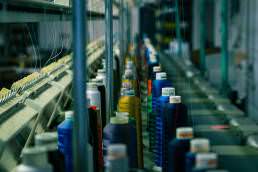Embroidery digitizing is the process of converting artwork into a digital file using a software that allows embroidery machines to understand the needle’s path. This process is not automated and in fact, great digitizing is considered an artform if done correctly. Most embroidery machines have software of their own allowing us to control their functions while reading instructions from a file that has been digitized.
Embroidery machines are not able to read the same types of files as your computer can, so you have to digitize your logo in a way that the machines can understand before they can do their job. From a digitizer’s perspective, that usually means taking a JPG or PNG file of a customer’s company logo or artwork and converting into an embroidery file. The embroidery file type is determined by the type of embroidery machine you will be using.

THE BASIC STEPS OF DIGITZING
Step 1: Upload Your Logo to the Digitizing Software…
Step 2: Set Embroidery Design Size…
Step 3: Choose Your Stitch Type…
Step 4: Set Stitch Direction…
Step 5: Set Your Embroidery Thread Colors…
Step 6: Transfer the File to Your Embroidery Machine…
Understanding the design is one of the most important pieces of this process. The size, complexity and placement of the artwork will all factor into the digitizing process. Efficient digitizers (and technically all digitizers if they are good) should consider fabric vs thread. There may be specific designs that will look better to have the fabric show through as a color rather than laying thread down. It’s also important to assign embroidery stitch types to specific areas while considering factors such as the fabric type and “push and pull” of the garment. There are many variables and directions that can affect the outcome of your stitching, so each job should be treated differently and handled with care.

PREPARING YOUR ARTWORK FOR DIGITIZING
CHOOSING YOUR STITCH TYPE
RECAP
Related Posts
January 14, 2025
New Year, New Uniforms: Elevate Your Brand in 2025
When you are alone for days or weeks at…



